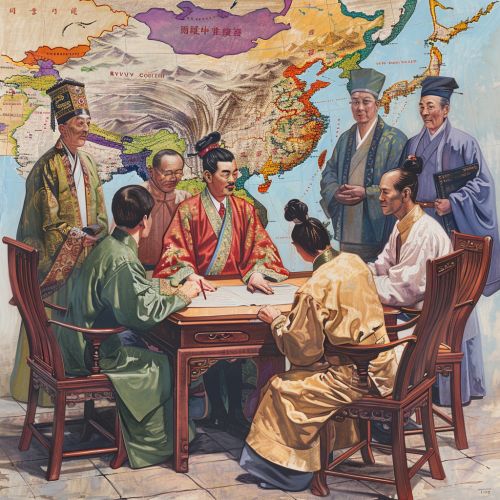Revive China Society
Introduction
The Revive China Society (興中會, Xingzhonghui) was a secret revolutionary society founded by Sun Yat-sen in 1894. It played a pivotal role in the early stages of the Chinese revolutionary movement, aiming to overthrow the Qing Dynasty and establish a republican government in China. The society is often considered the precursor to the more influential Tongmenghui and the Kuomintang (KMT).
Historical Context
The late 19th century was a period of significant turmoil and decline for the Qing Dynasty. The First Sino-Japanese War (1894-1895) exposed the weaknesses of the Qing military and governance, leading to increased calls for reform and revolution. The defeat by Japan, a nation that China had historically viewed as inferior, was a national humiliation that galvanized revolutionary sentiments among Chinese intellectuals and reformists.
Founding of the Society
Sun Yat-sen, a Western-educated physician and fervent nationalist, founded the Revive China Society in Honolulu, Hawaii, on November 24, 1894. The society's primary objectives were to expel the Manchus, restore Chinese sovereignty, and establish a democratic government. The society's motto was "Expel the Manchus, restore China, and establish a republic."
Organizational Structure
The Revive China Society was organized as a secret society, with a hierarchical structure designed to protect its members and activities from Qing authorities. The society had a central committee, regional branches, and a network of cells to facilitate communication and coordination. Members were required to take an oath of loyalty and secrecy, and they often used pseudonyms to conceal their identities.
Activities and Operations
The society's activities included propaganda, fundraising, and organizing uprisings. Sun Yat-sen and his associates traveled extensively to garner support from overseas Chinese communities and sympathetic foreign governments. The society published revolutionary literature and newspapers to spread its message and recruit new members.
The First Guangzhou Uprising
One of the society's most notable early actions was the First Guangzhou Uprising in 1895. Although the uprising ultimately failed, it marked the beginning of a series of revolutionary attempts to overthrow the Qing Dynasty. The failure of the uprising forced Sun Yat-sen into exile, during which he continued to promote the revolutionary cause.
Evolution and Legacy
The Revive China Society laid the groundwork for future revolutionary organizations. In 1905, it merged with other revolutionary groups to form the Tongmenghui, which later evolved into the Kuomintang. The society's emphasis on republicanism and nationalism influenced subsequent revolutionary movements and the eventual establishment of the Republic of China in 1912.
See Also


